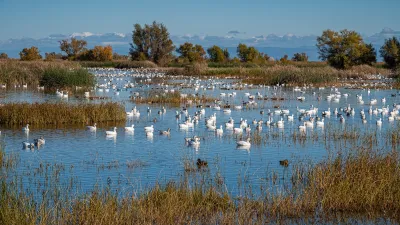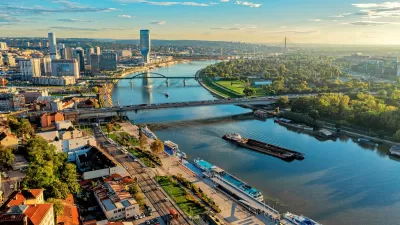A plan to restore perennial plants to agricultural land could help reduce runoff and improve water quality across the Great Lakes region.

A group of nonprofits and land trusts in the Great Lakes region is collaborating on a new effort to improve water quality by returning certain croplands to perennial vegetation to reduce runoff and limit erosion.
According to an article in Midland Daily News, “Using state-of-the-art watershed modeling paired with local insights, the Greater Lakes Promise team selects high priority lands for conservation. These lands are then permanently protected with funding generated by individuals and businesses who live and work in the region.”
The restored land will enhance carbon storage and reduce pollution. “The team will develop a modeling framework to target areas with the highest potential for phosphorous loading, along with the lowest predicted land value, in order to maximize the overall return on investment and make sure funds are put to good use.”
If successful, the project offers a promising approach to the permanent conservation of ecologically important areas.
FULL STORY: New regional partnership to improve Great Lakes water quality

Study: Maui’s Plan to Convert Vacation Rentals to Long-Term Housing Could Cause Nearly $1 Billion Economic Loss
The plan would reduce visitor accommodation by 25,% resulting in 1,900 jobs lost.

Alabama: Trump Terminates Settlements for Black Communities Harmed By Raw Sewage
Trump deemed the landmark civil rights agreement “illegal DEI and environmental justice policy.”

North Texas Transit Leaders Tout Benefits of TOD for Growing Region
At a summit focused on transit-oriented development, policymakers discussed how North Texas’ expanded light rail system can serve as a tool for economic growth.

Paris Bike Boom Leads to Steep Drop in Air Pollution
The French city’s air quality has improved dramatically in the past 20 years, coinciding with a growth in cycling.

Why Housing Costs More to Build in California Than in Texas
Hard costs like labor and materials combined with ‘soft’ costs such as permitting make building in the San Francisco Bay Area almost three times as costly as in Texas cities.

San Diego County Sees a Rise in Urban Coyotes
San Diego County experiences a rise in urban coyotes, as sightings become prevalent throughout its urban neighbourhoods and surrounding areas.
Urban Design for Planners 1: Software Tools
This six-course series explores essential urban design concepts using open source software and equips planners with the tools they need to participate fully in the urban design process.
Planning for Universal Design
Learn the tools for implementing Universal Design in planning regulations.
Smith Gee Studio
Alamo Area Metropolitan Planning Organization
City of Santa Clarita
Institute for Housing and Urban Development Studies (IHS)
City of Grandview
Harvard GSD Executive Education
Toledo-Lucas County Plan Commissions
Salt Lake City
NYU Wagner Graduate School of Public Service





























